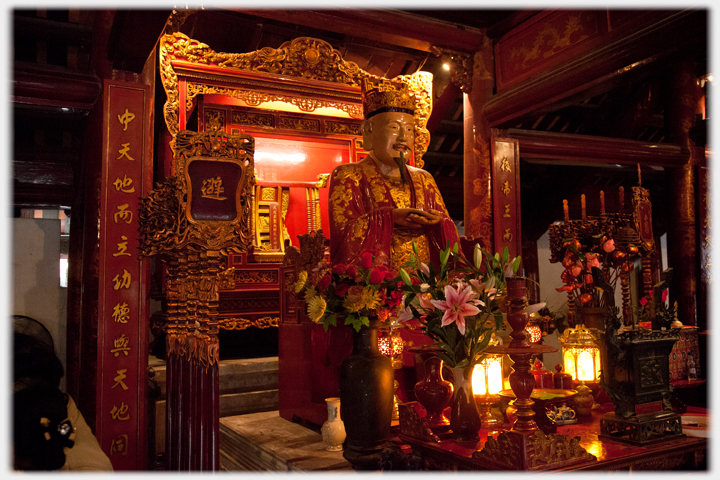
Hexagrams
The Master said, “Written characters do not fully express speech and speech is not the full expression of ideas.”
“Is it impossible, then, to know the meaning of the sages?”
The Master said, “The sages made the symbols [hexagrams] so as to fully express their ideas.”
Confucius (c. 500 BCE)

The Master in the quotation refers to Confucius who spies the gap between words and
thoughts,
 On disentangling thought from language.
and suggests a bridge using the
hexagrams
On disentangling thought from language.
and suggests a bridge using the
hexagrams
 A poet's way of seeing the hexagrams.
A poet's way of seeing the hexagrams.
of the I Ching. This, and succeeding commentaries, convert the I Ching from opaque prognostications to the foundation of the philosophical arguments that lasted for two millennium. The basis lies in the idea of
‘change’
 A page on the importance of change in our lives.
which is induced by the relation of heaven to earth: two core hexagrams. From these two ‘generation and re-generation’ emerge, and provide, in the resulting change, the basis of all that can be encountered. However, with the later influence of a Buddhism which denied a connection between past and present, change comes to be seen as an illusion or misunderstanding of stillness. So language struggles on. And we too are led to wonder, as Confucius did, if
symbols
A page on the importance of change in our lives.
which is induced by the relation of heaven to earth: two core hexagrams. From these two ‘generation and re-generation’ emerge, and provide, in the resulting change, the basis of all that can be encountered. However, with the later influence of a Buddhism which denied a connection between past and present, change comes to be seen as an illusion or misunderstanding of stillness. So language struggles on. And we too are led to wonder, as Confucius did, if
symbols

A page on symbols.
, or
images
 Does the image accomplish more than the word?
, or
poetry
Does the image accomplish more than the word?
, or
poetry
 Poetry wanders more freely than philosophy ever can.
might not be able to do a better job.
Poetry wanders more freely than philosophy ever can.
might not be able to do a better job.
The core of the I Ching is a set of 64 hexagrams (two sets of three broken and un-broken lines), these were augmented well before the Han Dynasty (206 BCE to AD 220) by commentaries called the Ten Wings. Two of these wings, the two entitled Xici Zhuan, are together known as the Great Commentary. Traditionally these were supposed to have been written by Confucius (551 to 479 BCE), but that is not now thought to be so, however, ‘The Master’(above) is meant to be Confucius. The quote is from page 476 of Zhang Dainian’s Key Concepts in Chinese Philosophy (1989) published in English by Yale in 2002. The original quotation is from the Great Commentary part I, chapter 12, paragraph 2.
The Confucius statue is in the Thượng Điện building of the fourth courtyard of the Temple of Literature in Hà Nội. This is the name for Hà Nội’s University founded in 1076, over 1,500 years after Confucius was teaching, and the statue is more recent still, being contemporary.
Above, hovering on blue introduces a link: click to go, move away to stay.

Saturday 30th October 2021
 ...guide to this site
...guide to this site